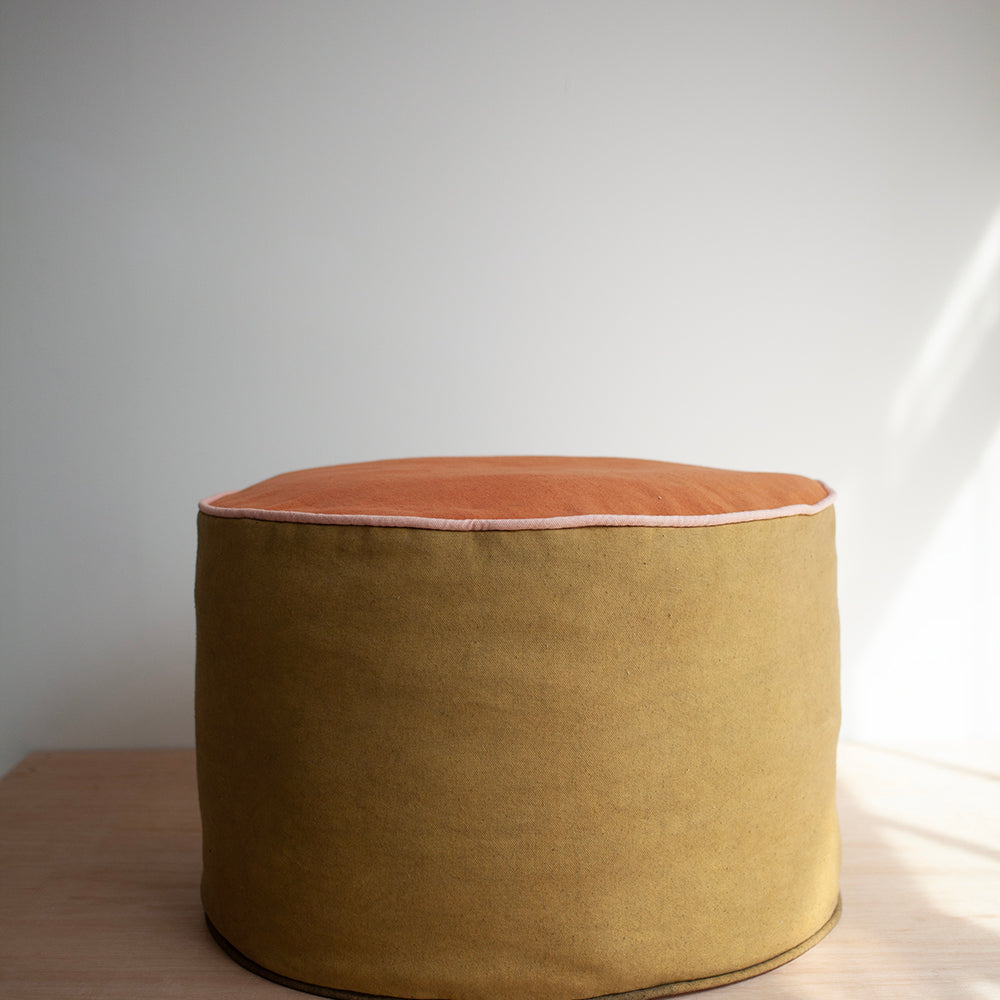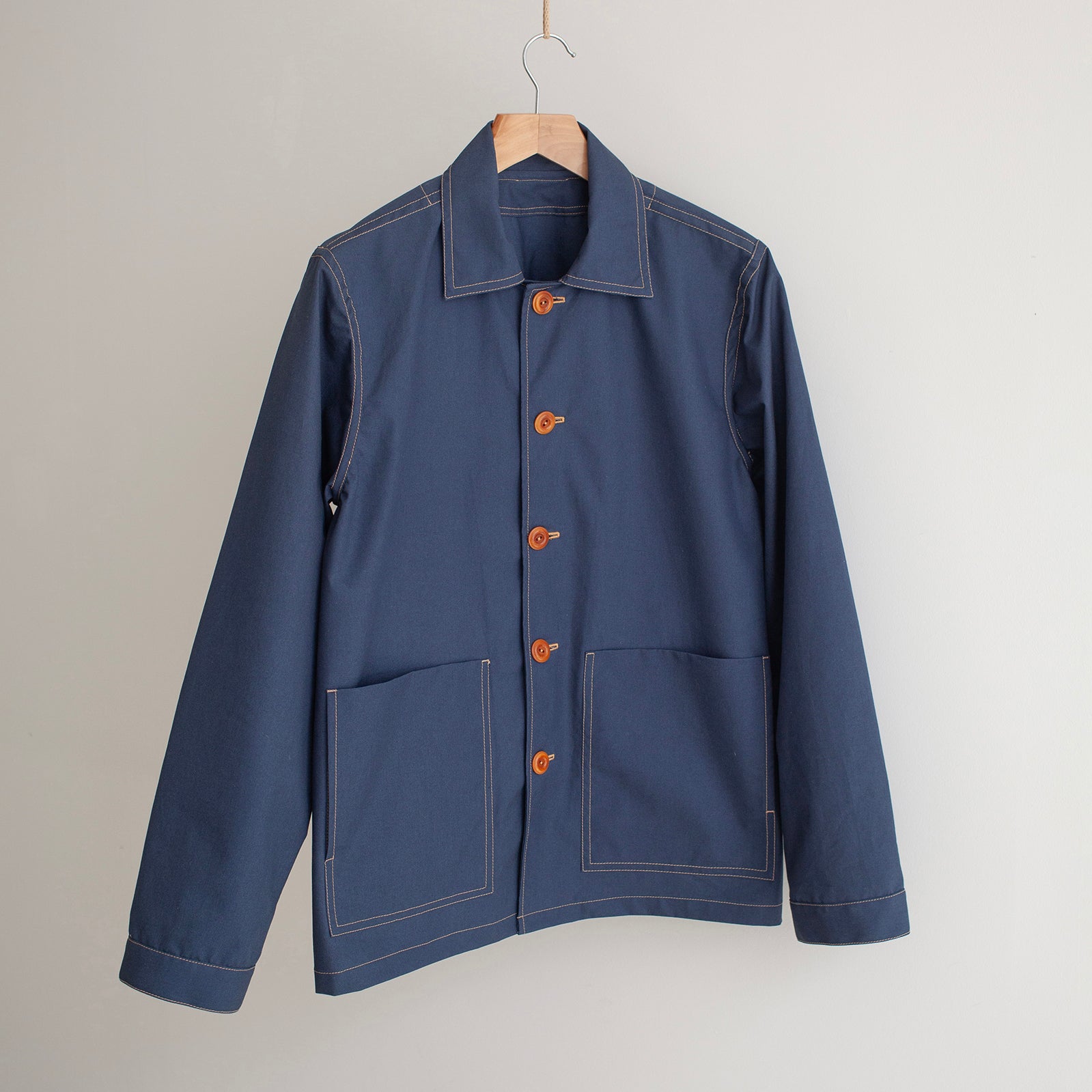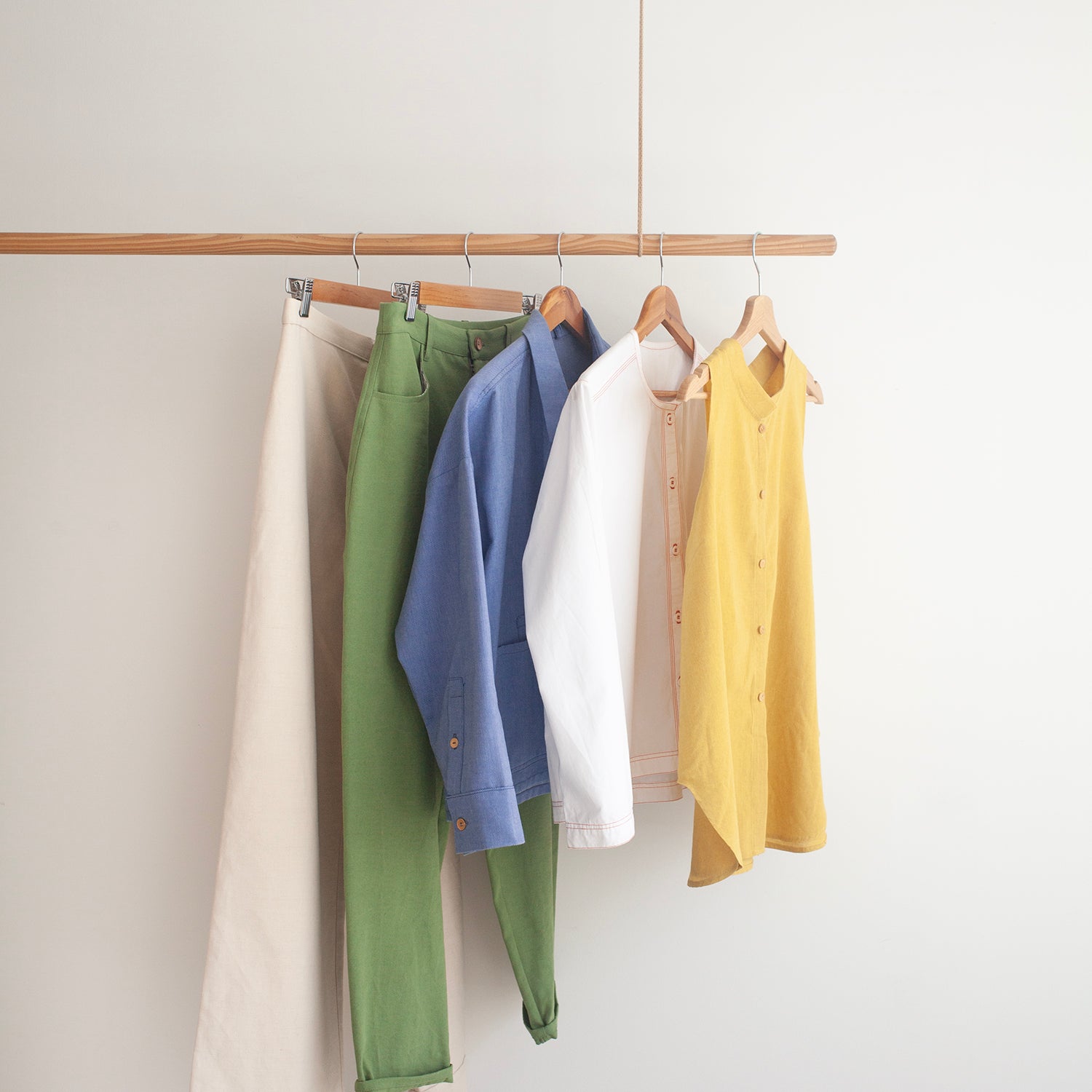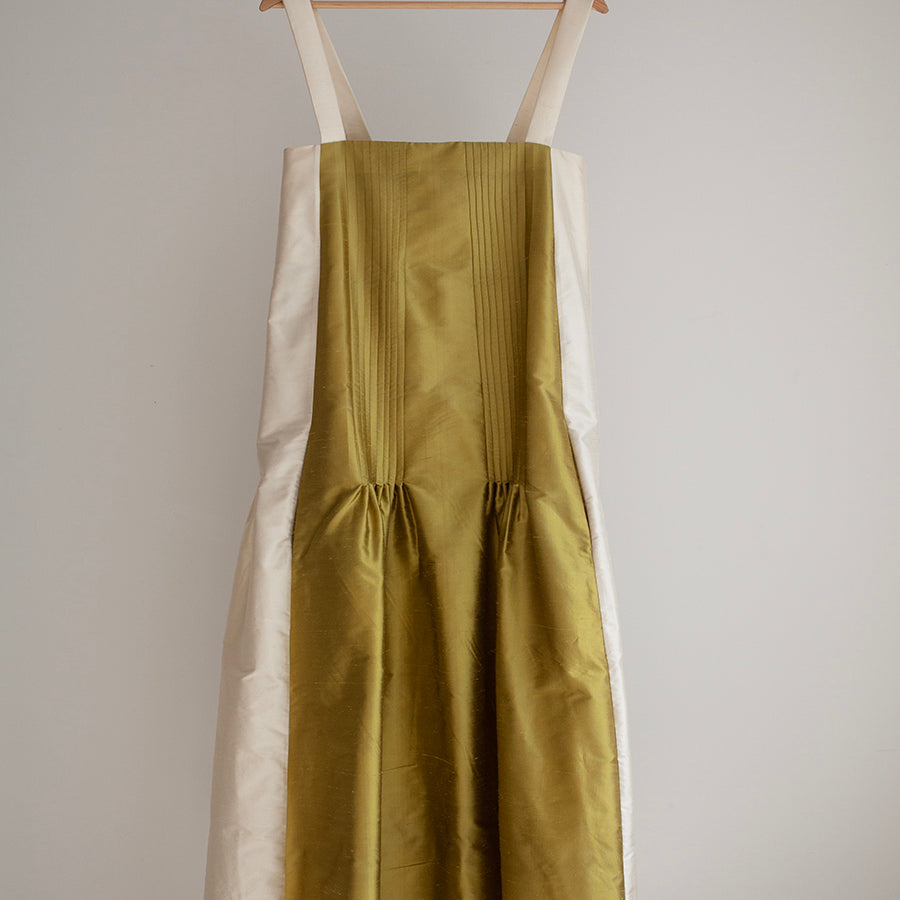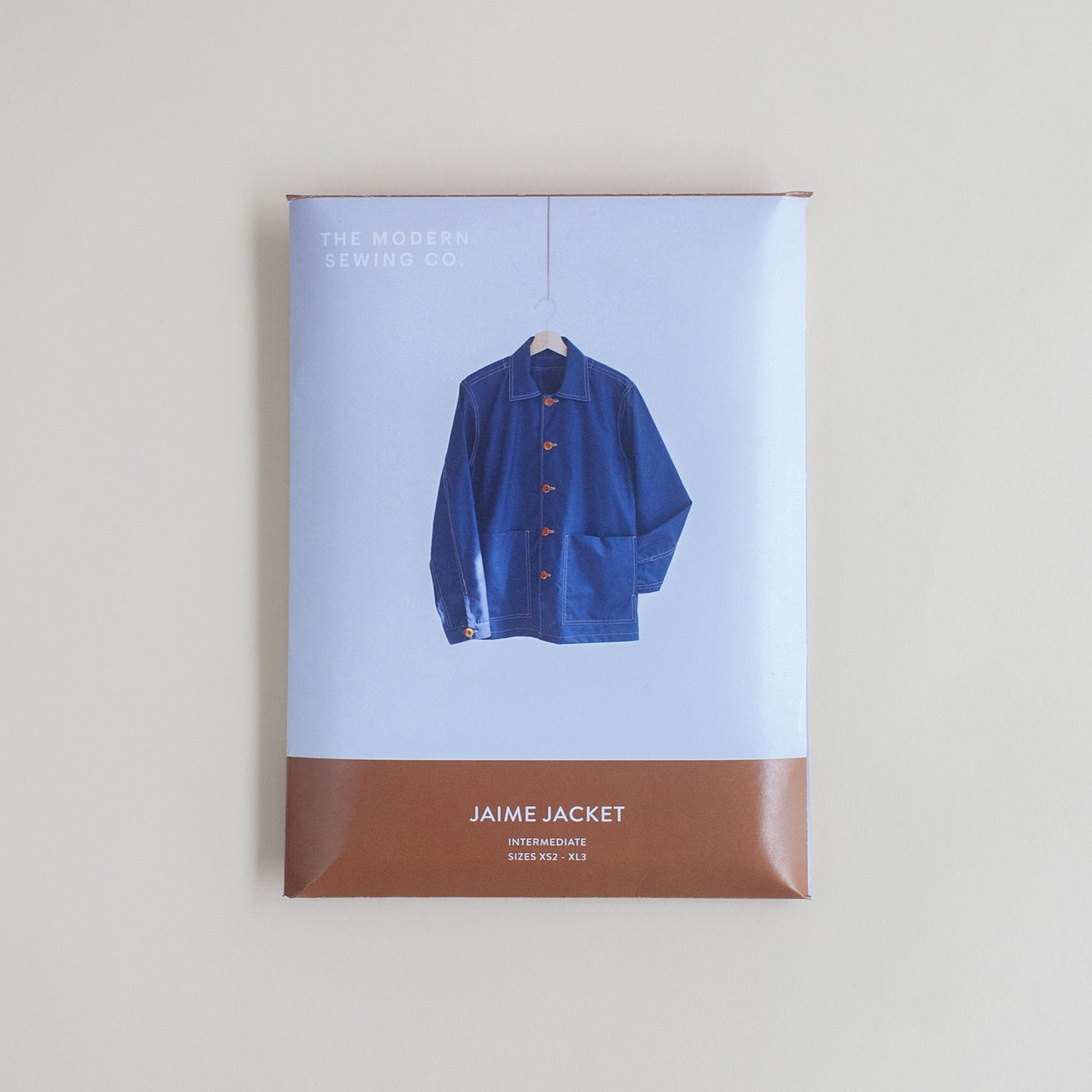
The Weekend Long Read
The Worker Trouser is coming into its SIXTH year of existence which is mind blowing to me. I first designed this simple trouser in the spring of 2017. At the time I had a small shop in Hackney selling women’s shirts and I wanted to expand the range a little. This coincided with me having a pitiful lack of decent trousers in my own wardrobe. I can’t deny there is a hint of ‘self serving’ when it comes to my design choices.
I really wanted to be able to dress myself head to toe in my own designs so I needed a trouser cut that worked with the rest of my range. This was predominantly shirts; casual shirts, elegant shirts, smocks, shirt jackets and simple blouses. The trouser needed to go with these pieces and be totally comfortable and practical. It needed to allow me to sit for hours at a desk or get physical with running errands around London. Sturdy yet elegant was the objective.

I spent the summer of 2017 making toiles and then wearable samples. I’d wear a pair for a month or two and then go back to the pattern, make notes and amendments and start test wearing the next piece. It took a LOT of tweaking to get a trouser with this fit without using waist darts. I eventually approved the pattern and we had them in production by the autumn of that year. They became a staple in the Henri range over the course of the following 4 years.
A year or so after launching this style I started to teach shirt making as a side hustle. I would gather 3 other makers in my tiny studio once a month and teach them the intricacies of shirt making over the course of a weekend. The demand for a Worker Trouser workshop came fairly quickly after that and when the pandemic hit I turned my studio workshops into online pre-recorded tutorials. The Modern Sewing Co. was born as a result of the pandemic and since then the Worker Trousers have become the number 1 bestseller.

I thought I’d shine some love on this cut which seems to be a firm favourite with our customers. I’ve shared a few details about the pattern itself, the fit and construction techniques along with my top tips for making them. At the end I’ve added some wonderful hack ideas from customers to show just how much you can do with this pattern.
I hope it’s useful (and interesting!) and if you’re left with any questions just hit reply to this email.
Hetty
x

The Cut
The Worker Trouser is cut to rest on the hips. It’s not super high waist, nor is it a low waist but somewhere in the middle. It’s important to get the fit right on the waist as this is essentially where the cut hangs from.
From a neatly fitted waist the side seams of the trouser flares out over the hips and thighs and then tapers back in from the knee to the ankle, giving it a subtle ballon silhouette.

Sewing Techniques
This style has a few processes that require a little extra brain power but I wanted to make sure it’s as accessible as possible. The online workshop is there for anyone who is early in their sewing journey but doesn’t want to limit themselves to easy projects.
The pre-recorded online tutorial takes you through every step in great detail and will allow inexperienced sewers to make a high quality pair of trousers. I don’t want you to have to waste fabric and time on ‘practise projects’, I’d much rather you have the guidance you need to get your teeth straight into garments you actually want to wear.

So without further ado, the construction techniques you’ll use (whether you’re following the tutorial or written instructions) are:
- Front pockets with facings and french seam finishing
- Back patch pockets
- Flat fell seams (created using an overlocker or zigzag stitch)
- Crotch construction
- Choice of zip or concealed button fly (please note the online tutorial only shows the concealed fly version - follow the written instructions for the zip fly)
- Binding finishing around the fly - this is what really sets the standard apart
- Curved waistband
- Belt loops

Tips
...for a smooth and professional finish
Pre-wash your fabric! This is the golden rule as many of you know. But I think it sometimes pays to pre-wash fabric TWICE for trousers just to be extra safe.
-
When it comes to choosing fabric it’s best to opt for something sturdy that has a bit of weight to it. Fabrics such as denim, canvas, cotton twills or corduroy are all ideal.
-
Think about the colour of your fabric for the pockets and binding. These areas are an opportunity to add a beautiful pop of colour to the inside of your trousers.

If you want to add or remove length, do so through the knee to retain the silhouette of the leg.
-
If you need to remove or add any volume to the waist or hips you should mostly focus on the side seams, distributing the volume evenly between the front and back legs. If you have quite a lot of volume to add or remove you can also use the centre back seam.
-
You can pre-fuse all of your pieces for a smooth sewing process.
-
Add a small length of binding to the outside leg seam at the hem to get a nice detail when you turn the hem up! Do this after you've overlocked the outside leg seam and before you topstitch it down.

Hack Ideas
Shake up the pattern and make it your own

1. The Pleat
Adding front pleats is a great way to add an extra design detail but also to give a bit of extra volume in the leg.
You'll need to make this amendment to your pattern before cutting the fabric out (or if you're a pro you can chalk it directly on to your fabric). You can add as much volume as you want and it's a nice idea to topstitch the pleat down by about 5cm to keep it in place.
For simplified guidance on this click the link below!
Above made by me, make details here
Below made by @the.social.fabric


2. Double Fronted
I love these huge patches added to the front legs to create an extra sturdy pair of trousers. This isn't something I've done myself yet but these two pairs are fantastic examples.
To create the patches I recommend pencilling the shape on to your paper pattern rather than free styling with fabric and scissors.
I love the contrast fabric colours below which goes to show there's plenty of freedom to get creative! If you're choosing two different colours try to use fabrics that are the same weight and weave.
Above made by @caitlinsewing
Below made by @salomeacres


3. The Pin-tuck
This pair with the added pin-tuck inspired me to make my own!
To do this cut the front leg pattern in half in a long straight line and open the two sides leaving a straight gap of 1cm. Then add paper underneath the pattern and glue down, leaving the 1cm gap.
Once you've cut the legs out in fabric mark the top and bottom of the 1cm gap and then fold the leg in half, wrong sides together. Press the fold and the stitch down the edge at 0.5cm and press the tuck towards the outside leg seam.
I think this is a great hack to use up fabric that feels a bit boring and bland. It helps gives it an extra bit of texture to elevate the whole piece.
Above made by @wide_eyed_makes
Below made by me


4. Shorts
This is perhaps the easiest hack to do and it gives you a really nice substantial pair of shorts.
Decide on the length you'd like your shorts to be, then add 2cm for the hem and then an extra 5-10cm just to be on the safe side. It's a nice idea to try them on, roll them up to the length you want them to be and then finish the hem.
Above made by @hatosews
Below made by @y_craft_shapes


5. Half & Half
I love this idea and again, it isn't something I've tried yet. To add some real character to your trousers, add a seam down the front legs and use contrast fabric colours (remember to add a seam allowance to each side).
This could be a good way to use up skinny scraps of fabric but I really recommend matching up the weight of the two fabrics carefully. I'd also recommend strengthening the front seam by sewing a run & fell seam or pressing it to one side and topstitching into place.
Made by @woppeltje

6. Play with Pockets
And last but not least, go full utility by adding more pockets! As many pockets as you want!
To create a 'cargo pant' look you can use the back patch pocket to add pockets on the side of the leg. I've found that a pocket flap works well with this as it helps to keep items secure when you're on the move.
Other ideas include sewing a little coin pocket to the front pocket facing or you could also sew welt pockets to the back legs instead of using patch pockets. (I know I promised to share this welt pattern a while ago but it's 100% coming soon, just as soon as I'm back from holiday!).
Made by me, make details are here.

And one last thing... playing with the width and placement of belt loops is another subtle way to add your own stamp to this piece.

-


